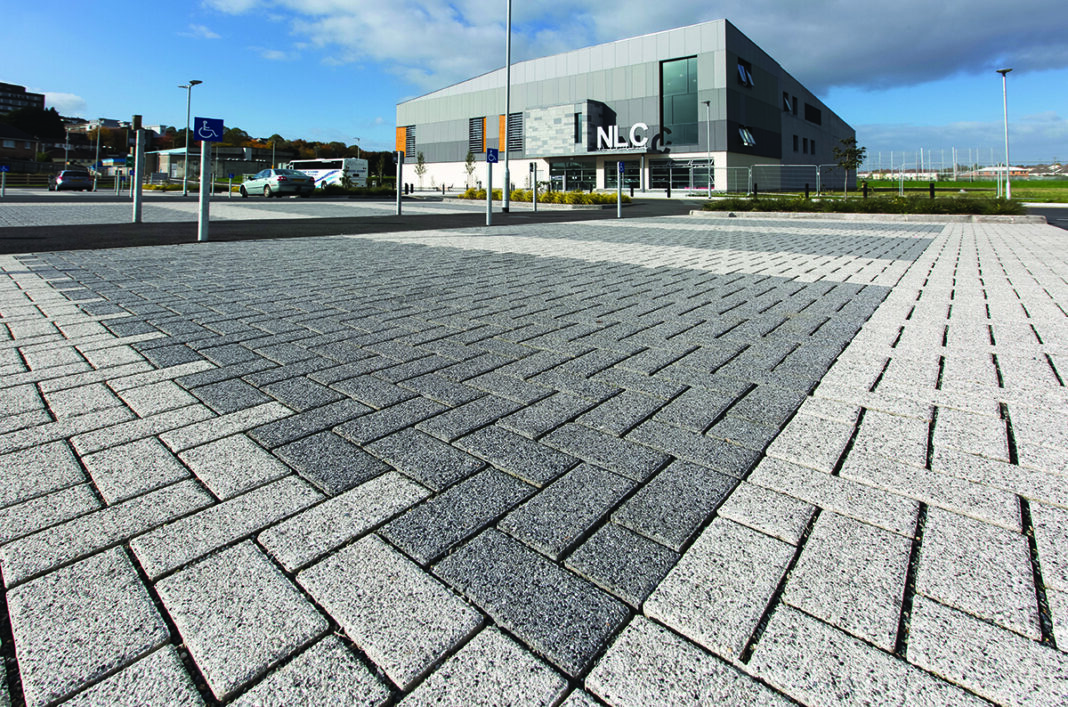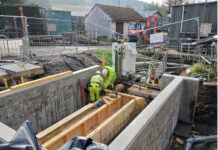
SuDS represent a collection of strategies, management practices, structures and design solutions that drain surface water efficiently and sustainably from development sites. Here, David McCandlish, regional sales manager from AG, explains how the growing importance of SuDS is paving the way for change in the industry.
FLOODING and flash flooding have been all too prevalent over the last few years in the UK and mitigating flood risk is becoming even more important, as is water conservation. This has led to many domestic and commercial projects calling for new and innovative ways to manage water runoff that arises from developments and drainage.
Sustainable drainage systems (SuDS) can contribute to both of these necessary needs whilst simultaneously improving water quality – making them a key tool in every architect and engineer’s toolbox.
Since 1961, the number of three consecutive days of rainfall (API 3) has risen 50%. This, coupled with the fact that we are building more than ever, has led to an increase in water-stressed areas where the conservation of water is a critical challenge.
Implementing SuDS with water recycling and rainwater harvesting enables us to cut down on primary water use and as SuDS manage water at the source, developers are able to avoid the cost of large-scale infrastructure to transport the surface water as well as significantly reducing land grab required by the site therefore– reducing the carbon footprint of the project.
There is often little warning when it comes to surface water flooding. Although weather forecasting is improving all the time, it is not always impossible to forecast intense rain. The recent floods have no doubt influenced people’s perception of climate control and subsequently we are seeing the government raise SuDS higher up in their agenda. The wide-scale implementation of sustainable urban drainage systems could play a vital role in helping to meet pressing climate targets – with the UK having a nationwide 2050 net zero carbon target.
SuDS are becoming more prevalent in the engineering sector, which is perhaps no surprise. Recent legislation means that all planning applications need to include SuDS, leading to developers having to set aside more land for green areas, increasing the landscaping and the number of trees taking carbon out of the atmosphere – therefore resulting in a more positive environmental impact.
With all of their impressive environmental credentials, such as pollution control, by treating the water before it enters the water course and erosion control, by slowing down the flow, it is perhaps somewhat surprising that their uptake has been slow. This may be due to the misconceptions surrounding SuDS that they are expensive, impractical and impact negatively on a development’s aesthetic. However, nowadays the inclusion of ponds within public space allows developers to integrate SuDS in these features, enhancing the look of the development and even adding value in some cases.
At AG, our aim is to enhance landscapes and encourage local biodiversity. Our Xflo permeable paving solution plays a key part in sustainable drainage systems it is designed to remove surface water rapidly and safely at a rate of over fifty times the expected rainfall of a one-hundred-year storm.

The harnessed water can then slowly infiltrate through the system and back into the ground with pollutants removed, or in line with Water Sensitive Urban Design (WSUD) principles, be attenuated for recycling for both domestic and commercial use or rewardingly diverted to create natural wildlife ponds, creating socially interactive high quality community spaces, encouraging rich and beneficial biodiversity. The range comes in over 20 colours as well a variety of styles and aesthetics giving architects and specifiers plenty of choice when using the SuDS solution.
There is no doubt that SuDS are here to stay. After all, it is vital we continue to be able to control and mitigate flood risk – improving water quality whilst simultaneously significantly contributing to the UK’s carbon neutral goal. Right across the construction and professional services sectors, we should focus on incorporating them into schemes from the beginning right through to the end.
However, it is also important for developers to know that SuDS is not a case of one-size-fits-all. Therefore, careful consideration should take place to determine the most appropriate system for each individual development.
At AG we are keen to support architects and specifiers in the development process, allowing us to properly implement SuDS from conception through to completion. We are seeing a wide range of projects starting to specify SuDS solutions, and with legislation continuing to change, we predict SuDS being an even greater driving force on the route to sustainability within the industry.











